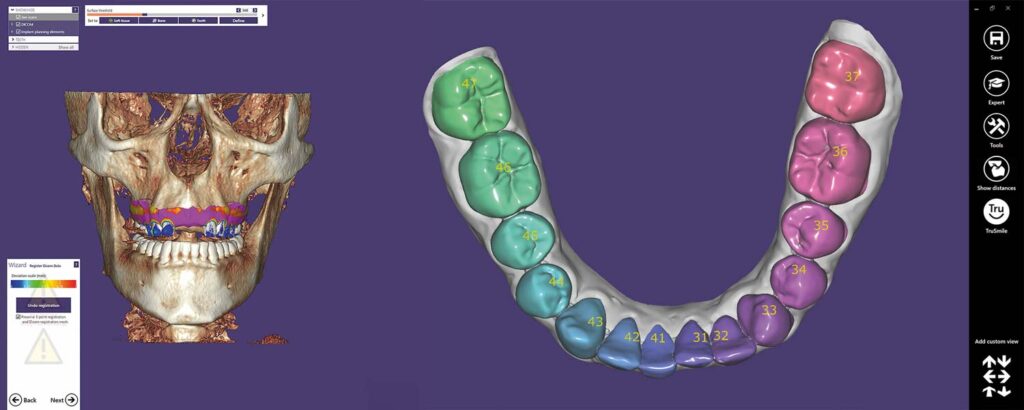
The design and manufacture of dental prostheses by computer has become for laboratories of dental prosthetics a tool allowing great precision and speed of execution. The 3D scanning technique / 3D Printing allows the dental laboratory technician to manufacture 95% of the prosthesis from his computer..
Impression taking
The impression is taken using an intraoral scanner. The data obtained can thus be transferred directly to the computer of the technician who will design the provisional prosthesis then the definitive prosthesis.
Dental prosthesis design
The conception and design of the prosthesis is carried out on a computer using software called CAD-CAM (EXOCAD, 3SHAPE). The jaw is completely reconstructed virtually. The technician will thus be able to reproduce the shape of the teeth and adjust the contacts occlusions without requiring the presence of the patient. This method allows both great precision but also allows to reproduce the prosthesis to infinity since the impression taking is digitally preserved. Once the computer aided design is complete, the information can be sent to the 3D printer or to the robot that will make the crown or final bridge.
Manufacture of the dental prosthesis
The manufacture of dental prostheses is, like the design, constantly evolving. After completing the design by computer, the dental laboratory technician sends the data to the CAD CAM robot which can begin manufacturing prostheses (crown, faceted bridge) by milling of a disc. This disc can be of different materials (Zircon, Emax ceramic, metal, composite, etc.). Once the milling job is finished, the prosthesis is placed in a very high temperature oven (1500 to 2000 ° C) which performs sintering (also called sintering) and which allows the zirconia to become harder. Then there will be the aesthetic manual work to be done on the tooth such as coloring and polishing.
The production of the prosthesis by a technician takes between 3 and 5 working days.

